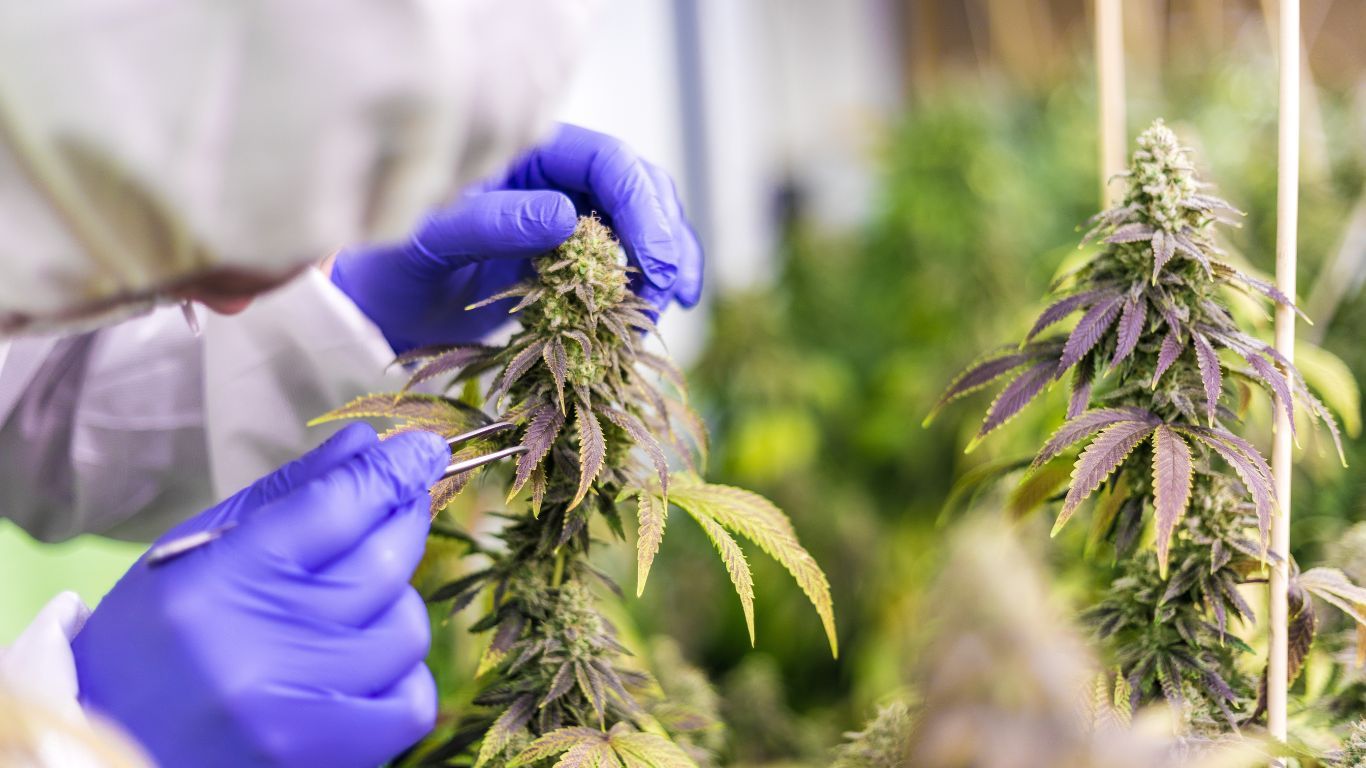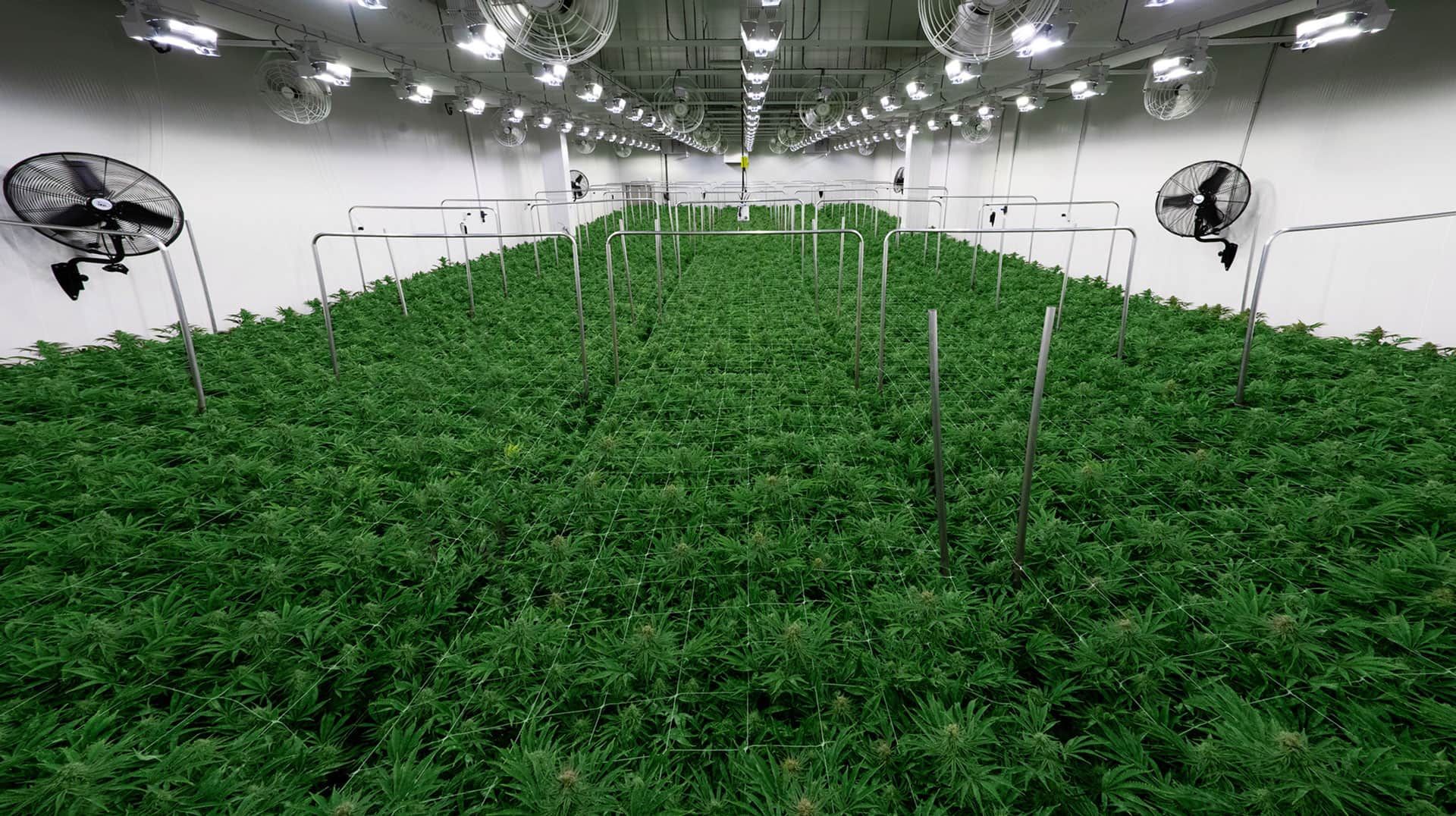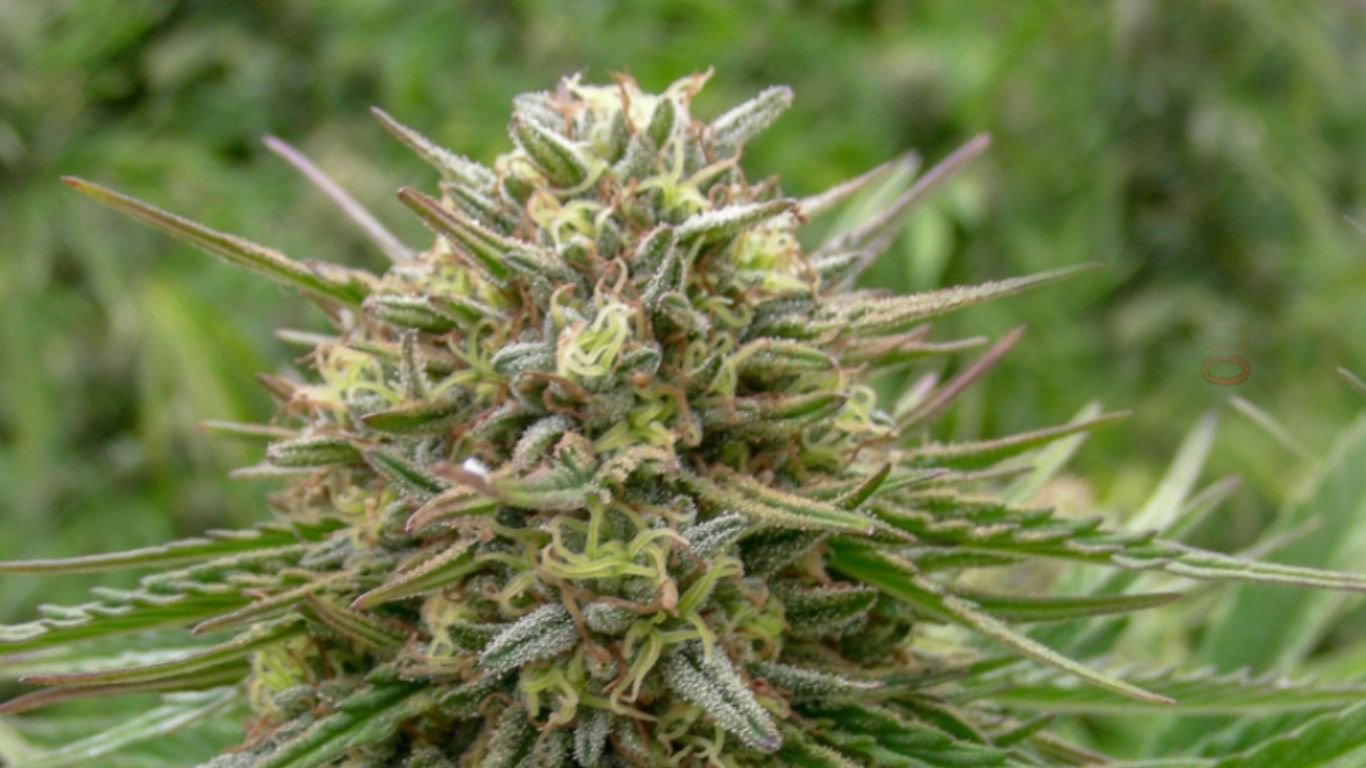
A lot of growers are leaving money on the table due to a failure of imagination.
The idea that cannabis should always veg at eighteen hours of light and flower at twelve is wrong. Cannabis plants do not require total darkness to flower and trivial light leaks will not cause plants to ‘hermi’.
For those of us who are prepared to replace cannabis mythology with plant science, there are opportunities to improve yields by better understanding our plants’ photoperiod requirements.
Photoperiodism
Photoperiodism is the ability of plants to anticipate seasonal change based on day/night durations.
The ability of plants to flower in response to day length may have been recognized by ancient agriculturists who observed that crops planted over an extended period would flower simultaneously.
This feature of plant development was first described in the scientific literature by botanist Julien Tournois in 1910 following observations of field-grown cannabis.
The economic importance of photoperiodic flowering was demonstrated by the emergence of the Maryland Mammoth (MM) tobacco cultivar.
This mutant cultivar would continue to grow vegetatively and produce valuable leaves long after other plants in the field had shifted to flower production.
When kept in a greenhouse, the MM would begin flowering on short winter days.
A couple of brilliant botanists named Allard and Garner theorized that plants could measure daylength.
To test this hypothesis, they built light-tight boxes, and placed them over field-grown MM tobacco plants each afternoon, to simulate short winter days. The plants flowered, proving their theory correct.
This technique is referred to as light-dep and is still in use a hundred years later.
“Due to the light loving nature of our favorite plant, many growers are missing out on yield by flowering at 12-hour photoperiods when they would achieve a much higher DLI by flowering at 14 hours.”
Short Day Plants
In the 1920’s Allard and Garner conducted a series of experiments to further characterize this phenomenon and coined the term Photoperiodism.
They determined that plants could be characterized as Short Day (SD) plants which flower during short days, Long Day (LD) plants which flower during long days, or Day Neutral (DN) plants which can flower regardless of day length.
Although tobacco is typically a DN plant, the MM mutant is an SD variant which enables continual vegetative growth during the long days of summer.
Most commercial cannabis cultivars are SD plants. This feature evolved to enable cannabis plants to flower and produce seed before the onset of winter in temperate climates.
Light cycle manipulation and mechanical blackout systems enable growers to initiate flowering of SD cannabis plants at the optimal time for canopy development.
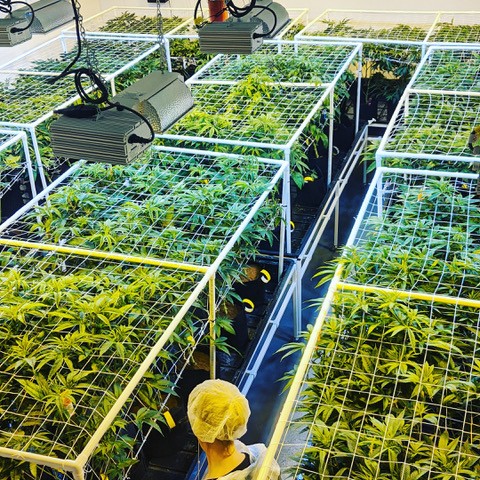
Night Interruption
Early photoperiod trials often produced surprising results.
The photoperiodic flowering response is determined by the night length (skotoperiod) rather than the day length (photoperiod). The use of lights to artificially lengthen the photoperiod will keep a short-day plant in vegetative growth.
A brief exposure to light during the middle of the skotoperiod has the same effect. This is referred to as Night Interruption (NI) lighting and is an efficient way to manipulate the photoperiod without upsetting your neighbours with continual light pollution.
Light Quality
Light quality refers to wavelengths of light that we perceive as the colour spectrum. Broad-spectrum lighting contains multiple wavelengths of light and is visible as white light. Plants continually analyze light quality to guide their physical development.
Experiments with different coloured lights reveal that red light produces the strongest photoperiod response.
A cannabis plant that is exposed to a 12-hour (flowering) photoperiod will not flower if there is a 10-minute exposure to red light of a moderate intensity near the middle of the skotoperiod.
If the red light exposure is followed by exposure to far-red light of a similar intensity and duration, the plant will flower as if the red-light interruption did not occur.
This cycle of red and far-red light exposure can be repeated many times over a dark period and the plant will respond to whichever light stimulus it was exposed to last.
This is referred to as a toggle effect and has led to the theorized existence of a pigment called phytochrome which changes form when exposed to specific qualities (colours) and intensities of light.
Many decades later, phytochrome was isolated.
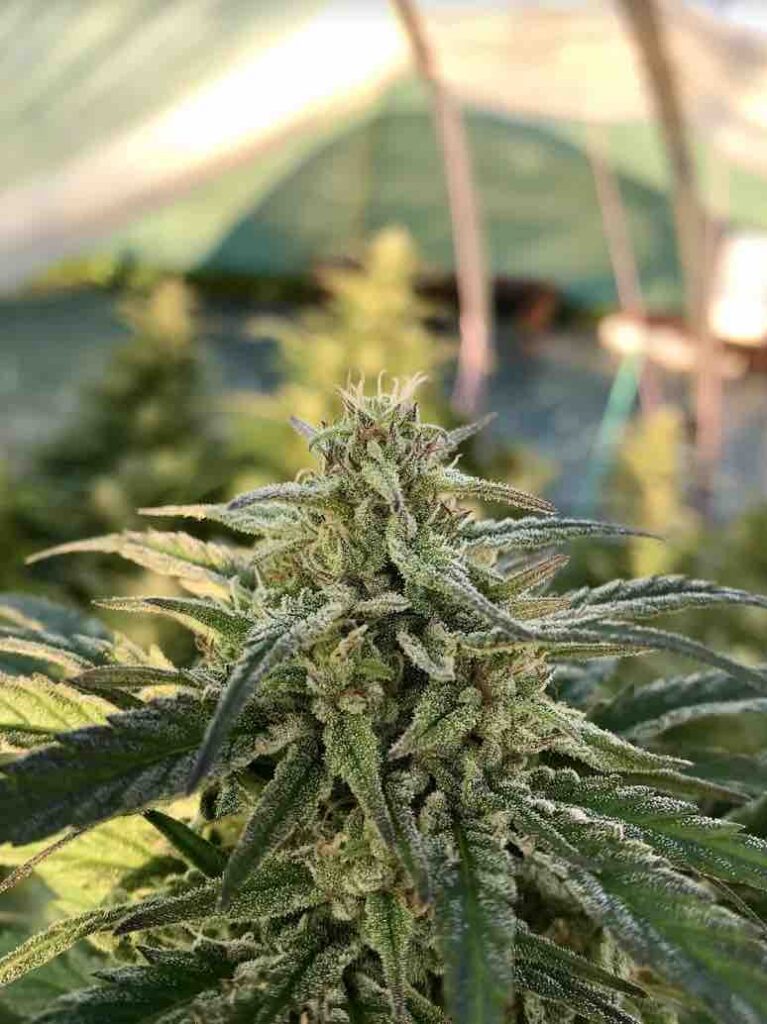
Phytochrome
Phytochromes exist in two interconvertible states depending on the quality of light they absorb.
Phytochrome red is the red-light absorbing state. When this pigment is saturated, it converts to Phytochrome far-red.
These states of phytochrome are constantly interconverting to mirror the light environment in a process known as photo equilibrium.
During the photoperiod, there is typically far more red than far-red light and phytochrome far-red is the dominant state. During the dark period, the Phytochrome far-red slowly converts back to Phytochrome red.
This daily pattern of interconversion creates a rhythm which enables photoperiod perception.
“Once a cannabis cultivar has been exposed to its critical photoperiod for four- or five-days, hormones and other signalling compounds form a cascade effect that commits the plant to flower formation.”
Photoreceptors
Phytochrome is one of several classes of photoreceptors.
These signaling compounds enable plant perception of light quality, duration, direction, and intensity.
Blue light also has a role in photoperiod perception by Cryptochrome photoreceptors. Many blue light plant responses can be reversed by green light exposure. Plants respond to light stimulus through metabolic systems which include gene and hormone regulation.
These systems have been evolving for hundreds of millions of years and have yet to be fully characterized.
Some horticulture LEDs now enable spectrum tuning so that growers can develop light recipes and provide different light spectra during various developmental phases.
A blue shifted spectrum will promote compact vegetative growth, while a red shifted spectrum promotes generative (flowering) development. Far-red light is typically used as an end of day treatment to quickly convert phytochrome at the onset of the skotoperiod.
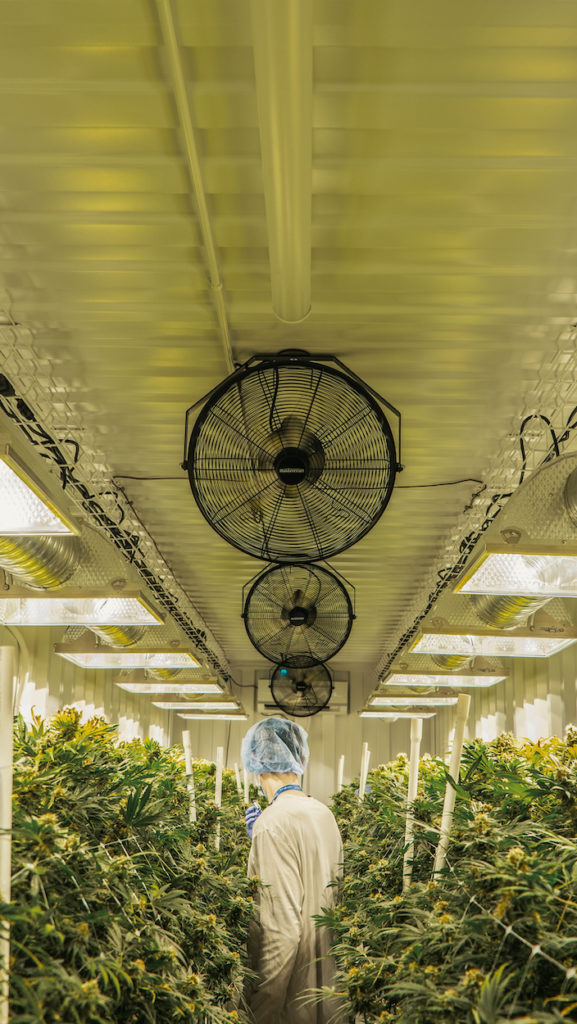
Light Quantity
A plant’s photosynthetic potential is determined by the cumulative amount of light received each day.
The metric by which light quantity for horticulture production is measured is known as the Daily Light Integral (DLI).
This measure is a factor of the light intensity multiplied by the photoperiod duration and is expressed in mol. DLI targets are determined for various crops based on the point at which additional light no longer has a linear effect on yield.
For many crops, this target represents the point at which additional supplemental light becomes uneconomical.
The target DLI for tomatoes, for example, is generally set at 25 to 30 mol. Cannabis is a light-loving crop with a proposed DLI target of at least 50 mol.
It is important to understand that plants will perform based on their limiting factors, and additional light will not improve performance unless other cultural conditions are met.
Inductive Photoperiod
The photoperiod required for a specific cultivar to flower is known as the critical inductive photoperiod.
Although some tropical landrace varieties may require 12 hours or more of darkness to flower, most commercial cultivars will flower with 10-10.5 hours of darkness.
Once a cannabis cultivar has been exposed to its critical photoperiod for four- or five-days, hormones and other signaling compounds form a cascade effect that commits the plant to flower formation.
Many otherwise sophisticated growers have no idea as to the critical photoperiods of the cultivars they have in production.
Due to the light-loving nature of our favourite plant, many growers are missing out on yield by flowering at 12-hour photoperiods when they would achieve a much higher DLI by flowering at 14 hours.
The critical photoperiod can be measured using a small grow chamber or tent where the photoperiod is slowly reduced until flowering is observed.
“This idea that cannabis is super sensitive to the presence of low levels of light during the skotoperiod is important to debunk.”
Dynamic Photoperiods
A dynamic photoperiod approach to steering crops into flower can include a reduction in photoperiod from 18 to 12 hours over a week or so.
As the photoperiod is reduced, light intensity can be increased to maintain a consistent DLI.
This will result in a robust flowering response and the photoperiod can then be increased to optimize DLI during flower expansion.
During the last couple of weeks of flowering, the photoperiod can be reduced to 12 hours for ripening.
Flowering is induced by photoperiod in SD cannabis, but other inputs can also contribute to this generative response.
Factors including irrigation dry-back and climate cues enable growers to steer crop development by stimulating hormone signaling systems.
Light Leak Myth
This idea that cannabis is super sensitive to the presence of low levels of light during the skotoperiod is important to debunk.
Growers who have been force flowering cannabis outdoors for decades using blackout tarps understand that low levels of light have no effect on skotoperiod perception. Blackout tarps with holes big enough for babies to crawl through can provide adequate darkness.
This observation has recently been proven by Dr. Bruce Bugbee who demonstrated that none of the cultivars studied could perceive light below about 10 nanomoles.
This is about 5X as much illumination as full moonlight and is enough light to read a large print book.
If the genetics that you are using are prone to hermaphroditism, any type of stress can cause this expression, and those cultivars should be retired from production. Don’t blame the little red light on your dehumidifier though.
Blackout curtains have big effects on the cultivation climate and can make humidity control more difficult during the dark period.
Understanding that cannabis can tolerate incidental light during the skotoperiod empowers growers to close blackout curtains for the minimum amount of time required to induce flowering.
Autoflowers
Not all cannabis cultivars are SD plants.
Autoflowering strains are day neutral (DN) and will begin flowering when they are developmentally prepared to do so, regardless of photoperiod.
The ability of these cultivars to flower under 20 hours or greater photoperiods increases their potential DLI under supplemental lighting conditions.
As this type of germplasm is further developed it may eliminate the requirement for cannabinoid producers to install and maintain blackout systems.
The DN flowering trait allows outdoor growers to harvest over an extended time period.
This enables more efficient use of labour and processing infrastructure and can provide market timing advantages for finished product.
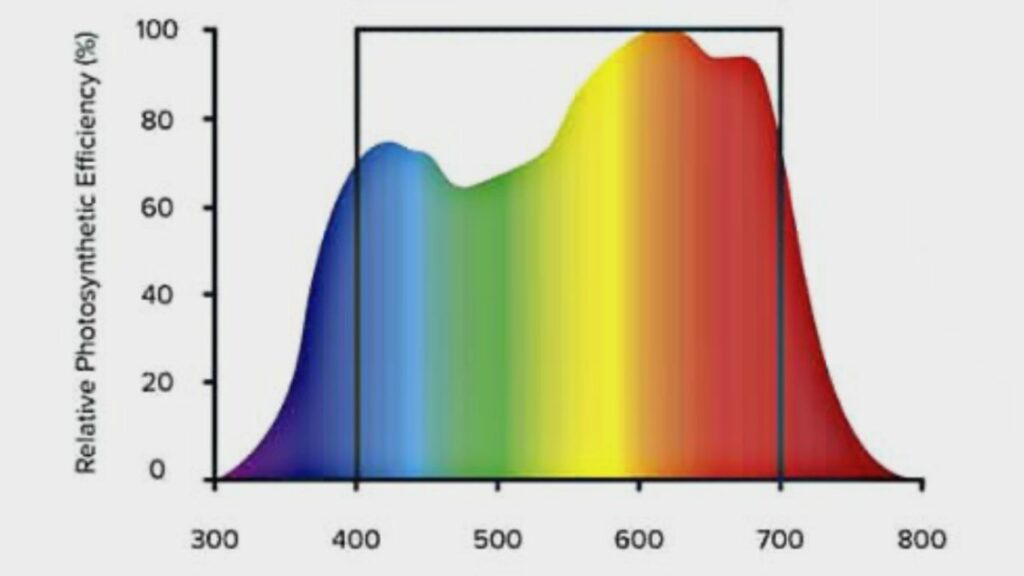
Photosensitive Cultivars
When autoflowering and SD plants are hybridized, the offspring typically have an intermediate photoperiod trait.
These plants often flower at 15- or 16-hour photoperiods and share other characteristics including a propensity to begin flowering spontaneously when rootbound.
Other cultivars that may not have autoflower pedigrees can also exhibit photosensitive flowering.
Photosensitive cultivars can flower on the longest days at subtropical latitudes. This allows growers in these regions to skip expensive blackout systems and use minimal NI lighting to vegetate plants until they are the right size to flower.
In northern climates, photosensitive plants can produce quality flower before the close of the short seasonal window.
Conclusion: Continue here
Stewart Maxwell is a cannabis crop consultant, and educator at ElevatedBotanist.com











